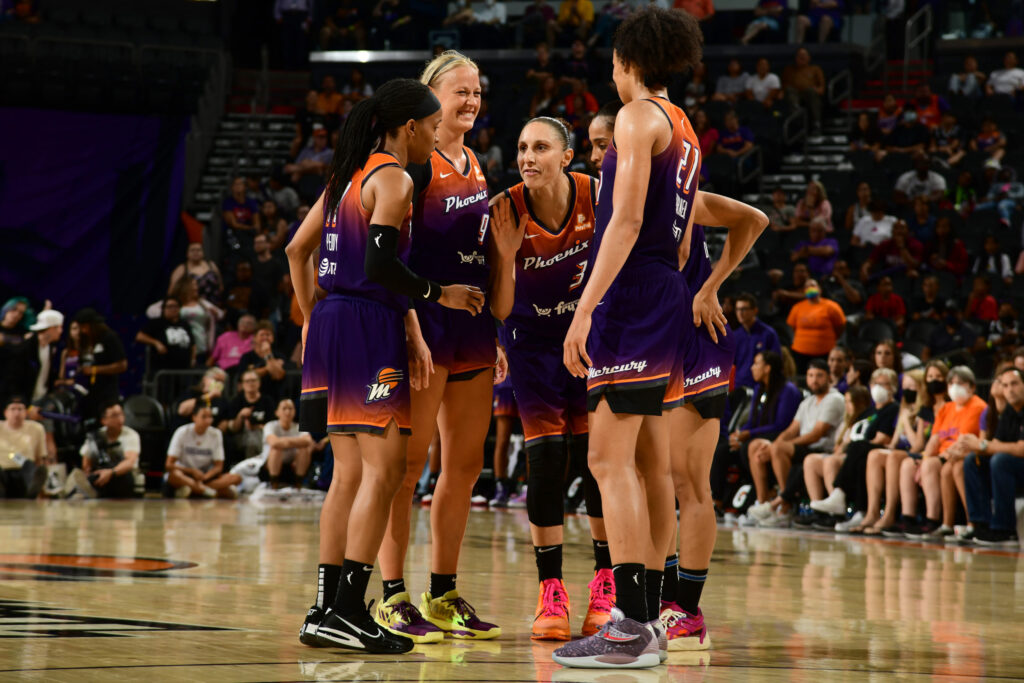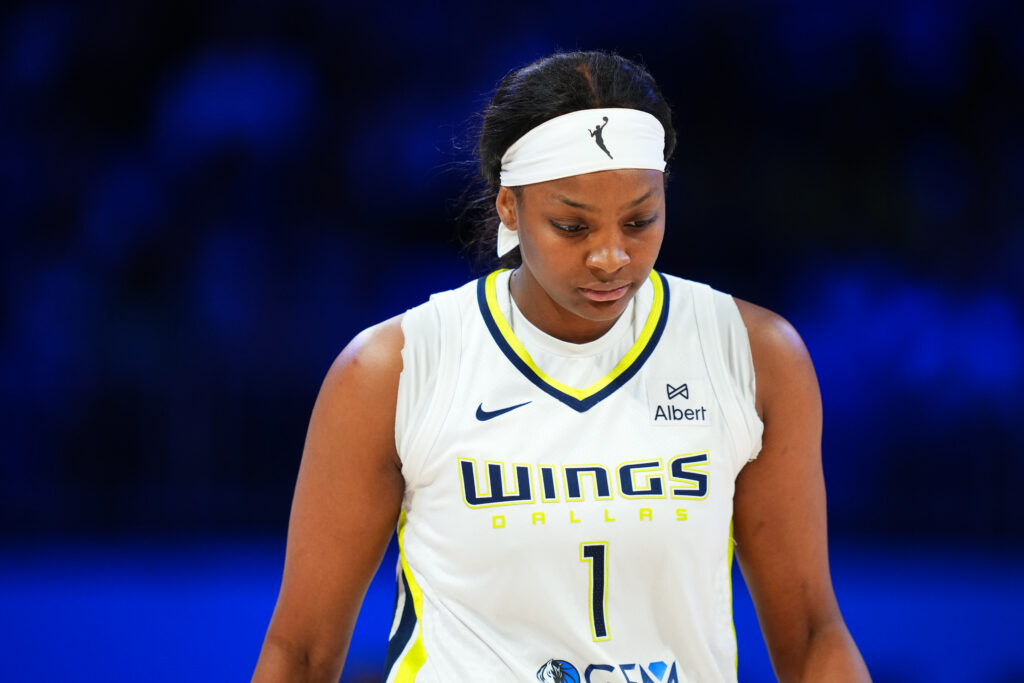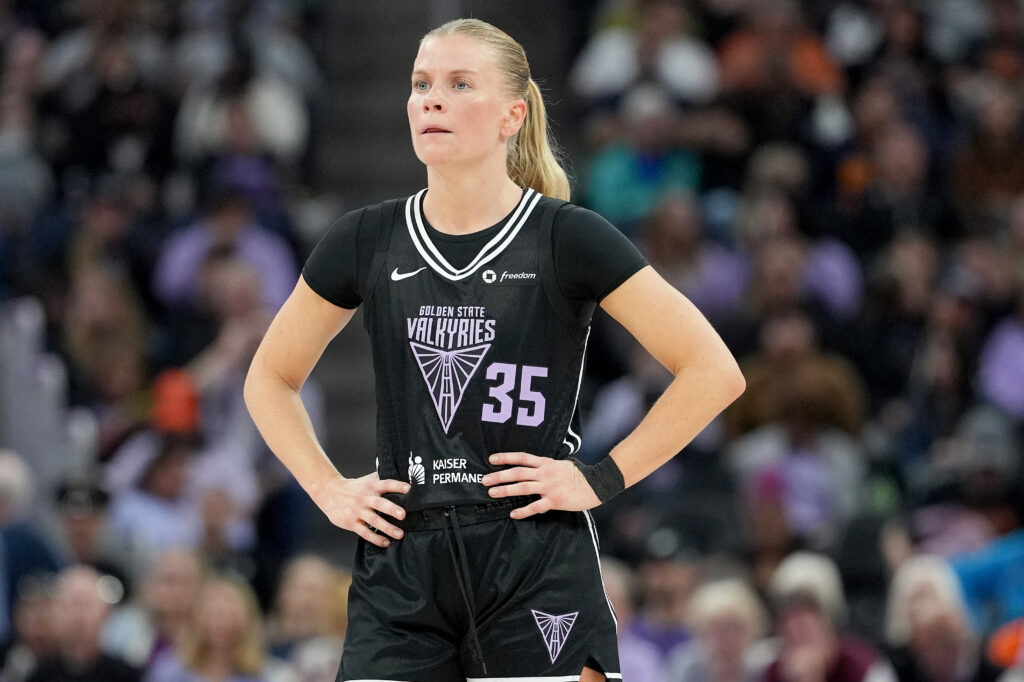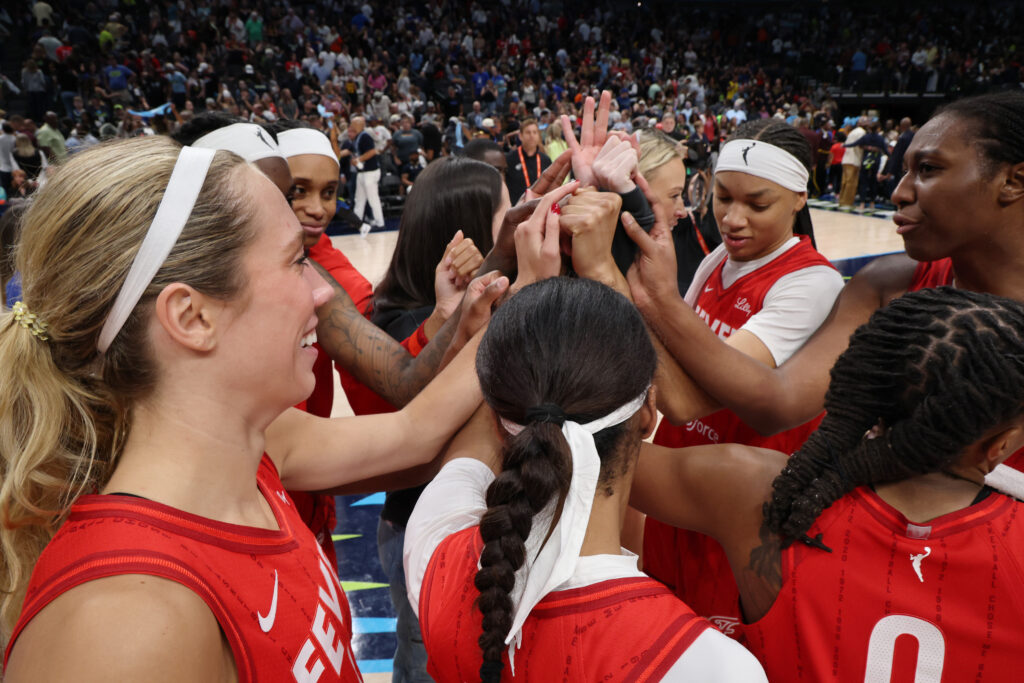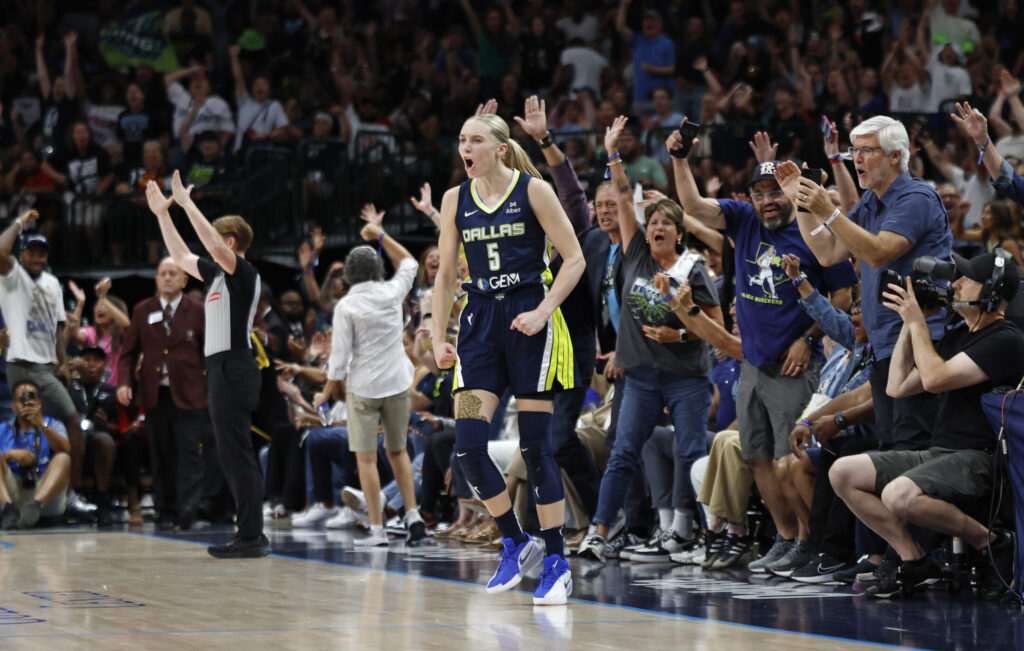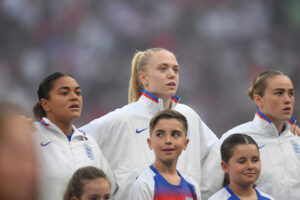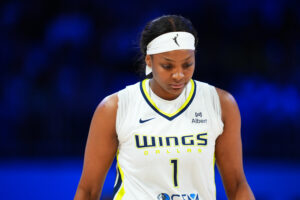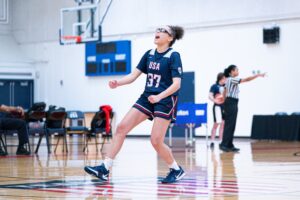Eight teams make the WNBA playoffs, and as it stands, all but one squad — the 5-22 Indiana Fever — are in contention. That means 11 teams are fighting to get into the postseason with one month remaining in the 2022 regular season.
While the Sky, the Sun, the Mystics, the Aces and the Storm are all above the .500 mark, the remaining six teams are the ones to watch as the playoff race intensifies. With just two games total separating them, the Dream, Liberty, Wings, Sparks, Mercury and Lynx all have a chance to receive bids.
Despite similar records and a playoff race that seems wide open, these teams are not created equal. Three will be in, and three will be out. Let’s predict which side of the aisle each team will be on by mid-August.
Mercury: 11-16, ninth in standings
It’s hard to believe the Mercury were the Finals runner-up last season, but since the Sky topped them 3-1, a lot has happened. Of course, Brittney Griner’s detainment in Russia looms large. Her on-court presence has been vital for the Mercury since she entered the league in 2013 — she averaged 20.5 points and 9.5 rebounds last season. But more than that, her absence is weighing mentally on every member of the Mercury.
Then, there was the “contract divorce” with 12-year veteran Tina Charles 18 games (and 12 losses) into the season, and Twitter-fueled drama between Skylar Diggins-Smith, Diana Taurasi and coach Vanessa Nygaard that leant itself to Diggins-Smith trade rumors around the All-Star break.
All that to say, there are a lot of factors working against the Mercury. And yet, I still like their chances to make the playoffs.
Skylar Diggins-Smith and Diana Taurasi had to be separated after a heated exchange on the bench. pic.twitter.com/QGCghYuHAf
— Bleacher Report (@BleacherReport) May 18, 2022
The supposed drama between Diggins-Smith and Taurasi is meaningless. On the court, the two play well together and that’s all that matters. Plus, they have loads of postseason experience and talent around them. Shey Peddy and sharp-shooter Sophie Cunningham continue to perform, and if the Mercury have a healthy Diamond DeShields and Kia Nurse down the stretch, they can be a dangerous team.
A big factor in the Mercury’s losing record has been their inability to hit the glass. Phoenix has been out-rebounded in all but six games this season, including Sunday’s loss to the Dream, in which Atlanta grabbed 43 boards to Phoenix’s 28.
In or out? In.

Dream: 11-14, sixth in standings
Of these six teams, the Dream and the Wings have the best winning percentage (44%), which is a good start for a Dream squad that’s trying to make the playoffs for the first time since 2018. Their win over the Mercury on Sunday snapped a three-game slide that included losses to three of the teams that appear to be playoff locks — the Sky, Mystics and Sun. With that victory, the Dream are 7-2 against the other five teams fighting for playoff position.
Rookie of the Year frontrunner Rhyne Howard leads the team with 14.7 points per game and a team-best 1.9 assist-to-turnover ratio. She’s aided on the offensive front by Tiffany Hayes (14.5 points per game), who’s played just five games after returning from a knee injury on July 3. Overall, though, the Dream have struggled to produce offensively. They’re last in the league — behind even the Fever — with an average of 77.5 points per game. The Dream also average a league-worst 17.2 assists per game, and turn the ball over a league-high 17 times a game.
Yet, the Dream have still managed to win against the teams they need to beat to get into the postseason. Their rebounding stats against the Mercury point to a bigger trend this season, with Atlanta ranking fifth in the league on the boards. The Dream are also helped by a solid bench. Second-year guard Aari McDonald is playing 25 minutes a game and averaging 10.6 points and 1.7 steals to lead the secondary unit.
In or out? In.

Wings: 11-14, seventh in standings
The Wings are a hard team to figure out. Offensively, they have three consistent weapons in Arike Ogunbowale (19.5 points per game), Allisha Gray (14.3) and Marina Mabrey (12.7), and they take care of the ball. Dallas averages a 15.3 percent turnover rate, which is the second best in the WNBA.
Despite that, their offensive efficiency is lacking. As a team, the Wings shoot 42 percent from the field and 35 percent from beyond the arc, and their shot selection isn’t always the best. Take their most recent loss to the Sky. Dallas went into the fourth quarter up by six points before Chicago closed out the win on a 30-16 run in which the Wings made just four field goals. Overall, the Wings have struggled with consistency, winning consecutive games just once since May 24. They’ve also played half their season without Satou Sabally (11.3 points, 4.8 rebounds per game) while she was nursing a knee injury, which didn’t help matters.
Teaira McCowan says NOT TODAY. pic.twitter.com/YmYTQRDSVf
— espnW (@espnW) April 1, 2018
But Dallas can find an advantage on defense with the continued development of players like Teaira McCowan (the 2018 NCAA Defensive Player of the Year at Mississippi State), Veronica Burton (a three-time Big Ten DPOY) and Awak Kuier, who at 6-foot-4 has an even bigger wing span that can disrupt offenses. If Dallas can find a way to score with more regularity and its defense continues to blossom, the Wings will be a playoff team.
In or out? In.

Liberty: 9-16, 11th in standings
After starting the season 1-7 and losing 2021 All-Star Betnijah Laney to a knee injury, things looked dismal for the Liberty. Since then, they’ve gone a much more respectable 8-9 that included a 7-4 month of June.
Guard Sabrina Ionescu has been an obvious bright spot for the up-and-down Liberty, leading her team in points (17.3), rebounds (7.1) and assists (6.2). And fellow 2022 All-Star Natasha Howard also does a little bit of everything, averaging 15 points, 6.9 rebounds, 2.2 assists, 1.2 steals and 1.2 blocks per contest. The Liberty have several other intriguing weapons, starting with Han Xu and Marine Johannès. Han has made a name for herself as a 6-10 center who can shoot 3s, while Johannès is an elite playmaker who serves as a second point guard.
But despite an arsenal of scoring options, the Liberty don’t generate offense in two key places. The first is at the free-throw line. New York attempts 15 free throws a game, which is last in the league. Secondly, the Liberty don’t create chances on the offensive glass or off of turnovers. They are 10th in the WNBA in both offensive rebounds (6.9) and 11th in turnovers forced (12.6). Plus, New York is currently on a four-game losing streak, something their 36.0 win percentage can’t afford.
In or out? Out.

Sparks: 10-14, eighth in standings
The Sparks started their season with a bit of drama, as GM and coach Derek Fisher was fired after a 5-7 start. Things haven’t improved much under Fred Williams, with L.A. going 5-7 since then for a 10-14 overall record.
Fisher’s time with the Sparks was clearly up, as he failed to achieve a winning record during his three and a half seasons, but changing leadership midseason almost always means sacrificing results the rest of the way. hat being said, the Sparks have a lot of offensive weapons and they are in the top half of the league with a 45.2 field goal percentage. All-Star Nneka Ogwumike is leading the way with 18.3 points per game, and Liz Cambage brings a size advantage at 6-9 and offensive might at 13.3 points a contest. Katie Lou Samuelson (10.8) and Brittney Sykes (10.7) round out Los Angeles’ double-digit scorers.
The Sparks’ struggles come on the defensive end. Their opponents shoot 45.9 percent from the field, the second-highest mark in the WNBA. They also give up a league-worst 1.14 points per scoring attempt and 0.95 points per play, the second-worst mark. And the defensive woes don’t stop there: The Sparks grab just 24.5 defensive rebounds per game, ranking 10th in the WNBA. The inability to shut down opponents is a dagger in a postseason race, so despite players like Ogwumike thriving on offense, the Sparks face an uphill battle.
In or out? Out.

Lynx: 10-17, 10th in standings
After the Fever, the Lynx have the worst win percentage at 37 percent. They still have a chance at the postseason; it’s just dwindling.
When the Lynx are at their best, they look like a postseason squad. From July 6-12, Minnesota enjoyed a three-game win streak that included victories over the league’s top teams — 102-71 over the Aces and 81-78 over the Sky — and an 118-107 OT win over the Mercury. During that stretch, Ariel Powers was unbeatable, averaging 29.7 points a game. Her offense is much-needed for the Lynx, half of whose wins this season have come when Powers is the leading scorer.
Sylvia Fowles leads the Lynx with 15.1 points and 10 rebounds a game in her final season, numbers that are comparable to her career stats. Unfortunately for Fowles, the Lynx don’t share her consistency. They’ve had both a four- and a five-game losing streak this season, and they have also lost twice to the five-win Fever.
In or out? Out.
Eden Laase is a Staff Writer at Just Women’s Sports. Follow her on Twitter @eden_laase.
